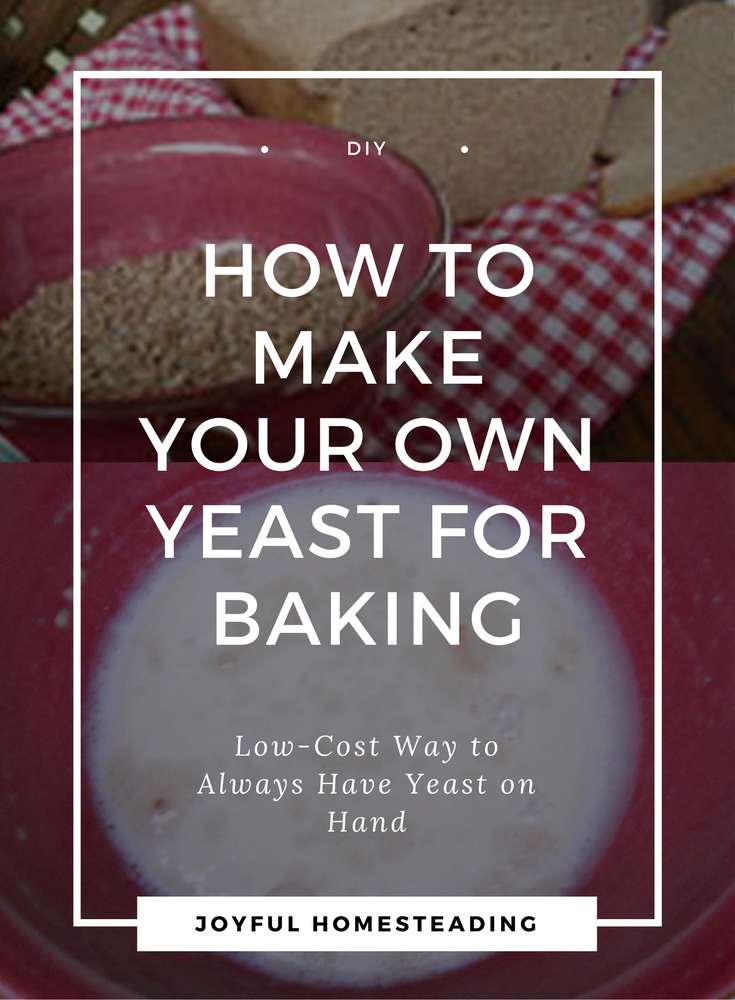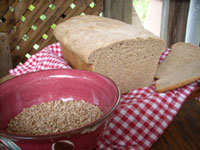Yeast for Bread
Having yeast for bread is a must if you plan on investing in wheat berries as a storable food. Without yeast you can't make bread, pizza or rolls, the comfort foods that will make life bearable in an emergency.

Of course, the easiest way to have yeast, even in an emergency is to buy it in bulk, along with bulk wheat and a hand-operated grain mill. That way, you'll be able to make bread whether a grocery store is open or not.
You can save a ton of money by purchasing your yeast in one pound, vacuum-sealed packages. (A good place to find them is here).

Unopened, your bulk yeast will last ten years or longer. Once opened, the yeast will be good on a shelf in your cabinet for about a year, or if you keep it in your freezer, it will last far longer.
I bought a case of these nine years ago for about $60, and I still have some left. I don't make bread every day, or I would have run out much faster, but the point is, a pound of yeast will go a long way.
But what happens if your yeast supply runs out, and you are no longer able to purchase yeast? Are you doomed to make bricks for the rest of your life? Fortunately homemakers have been making yeast for bread long before there were grocery stores.
About Yeast for Bread
Yeast is a spore that can be found everywhere, including in the air we breathe and even in our own bodies. Long ago, it was discovered that if you crushed fruit and left it covered it for a few days, it would begin to bubble up. Add that mixture to flour, water and salt, and the mixture would produce softer bread.
Still, different yeasts produce different flavors, and not all of them are enjoyable. The lucky family that stumbled onto a yeast batch that produced tasty bread kept it alive for years by adding a cup of flour and a cup of water to it on a daily basis. These yeasts were treasured family secrets, passed on from generation to generation.
But without a starter, it was nearly impossible to produce a consistent yeast batch. If that yeast batch you got from Grandma died, and Grandma wasn't around to give you any more, you would never be able to make that delicious bread Grandma used to make. It would never taste the same, and depending on your yeast batch, it could taste downright awful.
Louis Pasteur and Manufacturing Yeast for Bread
It wasn't until Louis Pasteur discovered that yeast grows the most efficiently when it has sufficient oxygen or respiration that yeast could be manufactured consistently.
By bubbling air through a nutrient solution in a highly controlled environment, commercial manufacturers are able to consistently produce yeast that makes delicious bread without a nasty aftertaste.
That's going to be hard for us self-reliant folks to match at home. Fortunately, there is a shortcut.
Self Reliant Yeast
If you are concerned about having yeast for bread recipes even in a long-term crises when you might not be able to go to the grocery store, you can keep the yeast you have on hand alive by by mixing a teaspoon of your yeast and a teaspoon of sugar with one cup of flour and one cup of water in a nonmetal bowl.
Cover the bowl and set it on your counter. Every day add a cup of flour and water and then toss out a cup of starter (or use it to make bread). If you are able to keep your starter in the refrigerator, you only need to do this once a week.
Plus There's Sourdough Starter
With a very small amount of yeast (just a couple of granules), you can also make your own sourdough starter. I got this recipe from the excellent Laurel's Kitchen Bread Book.
Sourdough Starter Recipe
- 1 cup rye berries OR 1 1/2 cups whole rye flour
- 1 1/2 cups water
- 1/2 teaspoon milk
- 1 grain of yeast
In a nonmetal container, mix all the ingredients together until the mixture is very smooth and is like a pancake batter. Cover it and keep it at a warm room temperature of between 65 and 80 degrees Fahrenheit for three to five days, stirring it twice a day.
By the end of that time it should give off a nice, sourdough fragrance. If it smells too sour, you have let it get too warm. Throw it out and start over again.
Store this mixture in an airtight container in your refrigerator. To make bread, set the mixture on the counter and allow it to come to room temperature. Then take out 3/4 cup for your bread recipe and then add 3/4 cup of flour and 3/4 cup of water before returning it to the refrigerator.










New! Comments
Have your say about what you just read! Leave me a comment in the box below.